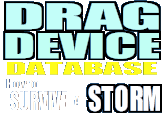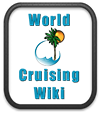How Much Does it Cost to Live the Dream? The First Year
Before you can go cruising, you need a boat.
The first big decision is, of course, what boat to buy. But don’t buy a boat unless you are going to spend at least 4 months a year living on it. Anything less than that and it is cheaper (and a lot less hassle) to charter it.
Seriously.
One friend bought a 26ft day cruiser. He told me that by the time he added up all the costs of maintenance and mooring, and divided that by the number of days he actually went out sailing, it cost him over $1,500 per day. That is a lot for a small day sailer.
In the Caribbean we met a Frenchman who had chartered a boat for a 6-month cruise. Excellent idea. He doesn’t have to worry about maintenance – just calls up the charter company to come and fix stuff. And at the end, he doesn’t have to worry about trying to sell it, or store it.
Another friend bought a boat for a one-year cruise. It turned out to be a very expensive year, with some major repairs required. And then it took a year to sell it afterwards. Would have been cheaper to charter. So evaluate your plans carefully.
Once you decide you do want to buy, then one of the big decisions is how much to spend and, for the same amount of money, whether to buy big and used, or small and new. Here are my thoughts:
A new boat is like a new car. Looks lovely on the hard or in the boat show, but as soon as you sail it off the dock it becomes a used boat. Depreciation is horrific in the first 3-4 years. And don’t assume that because it is new, you won’t have any repairs to do for a while. I have heard numerous first-hand reports of BIG problems occurring in the first two years of life. Of course they are covered by the warranty – but it still spoils your summer. An older boat at least has those wrinkles sorted out.
On the other hand, if you have specific requirements, then of course you can get a boat custom made and finished exactly as you want it. You will know if you are that kind of person, as you will already know exactly what it is you want in your next boat. In fact, I already know you are not, as you are reading this article. So, if you are going to buy a production boat, save yourself a lot of money and get it a few years old. Oh, and remember that a new boat comes as a very bare boat. Any toys you want on it are all extra. That even includes the anchor and chain.
Now, if you buy an older boat, that means you can either buy a bigger fancier one, or you can save the extra money and spend it on toys. Or invest it for income :-).
Remember that a boat becomes exponentially more expensive as it gets bigger. I don’t mean just to buy, but also to maintain. You will spend more on repairs, more on new parts, more each time you park in a marina, more each time you haul out and paint the bottom, more each time you cross the Panama, Suez or Corinth canals. Everything is more on a bigger boat.
What is also more are the forces on the sails and rigging. The amount of power on a big boat in a blow is truly staggering. That means bigger winches and machines to handle it all. Bigger sails to reef. Think about how much you and your crew can safely and easily manage. Especially if those fancy electric winches break down.
On the other hand a bigger boat is usually a safer boat when it comes to storms.
To my mind the minimum size for a cruising cat is 38ft. Smaller than that and there just isn’t the load bearing capacity to carry everything – safety stuff like spare anchors, drogues, parachute anchors, a big toolkit, spare parts and so on.
On the other hand, anything above maybe 47ft is getting to be a lot to handle for a couple sailing by themselves. Fine when it all works, but what happens when things don’t? Can you haul up the anchor by hand if the windlass packs up? And that is a very tall mast to be climbing!
Of course there are plenty of cruisers who would disagree with me at both ends of the spectrum. Hey, if your budget is minimal, then buy a smaller boat and at least go. Lin and Larry Pardey are famous for sailing for years (including an Atlantic crossing) in their 24ft monohull Seraffyn with no toilet and no engine. Their advice? “go small, go simple, go NOW”.
But if you are new to the cruising game, don’t get a bigger one than you know you can easily handle. It is not about impressing anyone.
Then you have the decision of buying ex-charter (the cheapest), ex-cruiser, or ex-weekend sailor.
A charter boat will have been very well used. It will probably look a bit rough around the edges. It will also have only basic equipment on it. Yes, you can take it and sail it right off the dock (and you should), but most likely you will spend quite a bit in the first year bringing it up to the standard that you like. To get an idea of the things you may well be buying in that first year, take a look at our page on home improvements. Bear in mind that at about 10 years of age there will be a lot of things that are coming to the end of their life – the standing rigging certainly being among them. See our experience with 10-year old rigging.
An ex-cruising boat will be much better equipped. It will have on it everything that the previous owner considered essential or desirable for cruising. You might agree with his list. Or you might not. Either way you will pay a higher price as, most likely, it will be in better overall condition and better equipped than the charter boat. Most likely it will also have been well maintained – at least up until the point at which they decided to sell it. After that it may well have just minimal maintenance.
An ex-private boat is a very variable proposition. There is huge variability on how much they are used and how well they are maintained. Sometimes you can get a real bargain. Or a real lemon. Make sure you get a really good survey done and check out every piece of equipment.
Ok, you have bought a boat. But your expenses don’t stop there. The first year will be your most expensive, as you will need to repair and upgrade what was neglected by the previous owner. Many people talk about spending 10% – 30% of the price of the boat in that first year. Don’t go crazy and upgrade everything. Sail a bit while you work out what you really need and what, surprisingly, you don’t need.
Don’t put off sailing while you are getting your boat to perfection (you will never reach that point, and you will never sail). Get out, start sailing, but sail cautiously.
Don’t do ocean crossings until you have developed confidence in your boat, which comes only by sailing it and replacing the things that break! Cruise in areas where parts and specialist help are easily available. It is still fun, and you will save yourself a lot of aggravation when some neglected but crucial part breaks and you have to fly in a replacement. What would you do, for instance, if your prop-shaft falls off?
By the end of your first year you can probably consider the cost of buying the boat completed. Then comes the cost of just cruising. I will save that for the next article.





